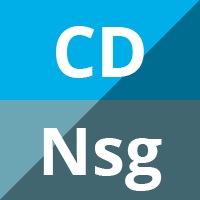
Action observation for upper limb rehabilitation after stroke
Abstract Background Action observation (AO) is a physical rehabilitation approach that facilitates the occurrence of neural plasticity through the activation of the mirror‐neural system, promoting motor recovery in people with stroke. Objectives To assess whether action observation enhances motor function and upper limb motor performance and cortical activation in people with stroke. Search methods We […]

Percutaneous vascular interventions versus intravenous thrombolytic treatment for acute ischaemic stroke
Abstract Background Most ischaemic strokes are caused by blockage of a cerebral artery by a thrombus. Intravenous administration of recombinant tissue plasminogen activator given within 4.5 hours is now standardtreatment for this condition. Percutaneous vascular interventionsuse an intra‐arterial, mechanical approach for thrombus disruption or removal (thrombectomy). Recent randomised trials indicate thatpercutaneous vascular interventions are superior […]

Electromechanical and robot-assisted arm training for improving generic activities of daily living, arm function, and arm muscle strength after stroke
Abstract Background Electromechanical and robot‐assisted arm training devices are used in rehabilitation, and may help to improve arm function after stroke. Objectives To assess the effectiveness of electromechanical and robot‐assisted arm training for improving activities of daily living, arm function, and arm muscle strength in people after stroke. We also assessed the acceptability and safety […]

Endovascular coiling versus neurosurgical clipping for patients with aneurysmal subarachnoid haemorrhage
Abstract Background Around 30% of people who are admitted to hospital with aneurysmal subarachnoid haemorrhage (SAH) will rebleed in the initial month after the haemorrhage if the aneurysm is not treated. The two most commonly used methods to occlude the aneurysm for prevention of rebleeding are microsurgical clipping of the neck of the aneurysm and […]

Activity monitors for increasing physical activity in adult stroke survivors
Abstract Background Stroke is the third leading cause of disability worldwide. Physical activity is important forsecondary stroke prevention and for promoting functional recovery. However, people withstroke are more inactive than healthy age‐matched controls. Therefore, interventions to increase activity after stroke are vital to reduce stroke‐related disability. Objectives To summarise the available evidence regarding the effectiveness […]

Blood pressure‐lowering treatment for preventing recurrent stroke, major vascular events, and dementia in patients with a history of stroke or transient ischaemic attack
Abstract Background Stroke is an important cause of death and disability worldwide. Since high blood pressure is an important risk factor for stroke and stroke recurrence, drugs that lower blood pressuremight play an important role in secondary stroke prevention. Objectives To investigate whether blood pressure‐lowering drugs (BPLDs) started at least 48 hours after the index […]

Antiplatelet and anticoagulant agents for primary prevention of thrombosis in individuals with antiphospholipid antibodies
Abstract Background Antiphospholipid syndrome (APS) is an autoimmune disease characterised by the presence ofantiphospholipid (aPL) antibodies that have prothrombotic activity. Antiphospholipidantibodies are associated with an increased risk of pregnancy complications (recurrent miscarriage, premature birth, intrauterine growth retardation) and thrombotic events (both arterial and venous). The most common thrombotic events include brain ischaemia (stroke or transient […]

Remote ischaemic conditioning for preventing and treating ischaemic stroke
Abstract Background Remote ischaemic conditioning (RIC) has been developed as a neuroprotective strategy to prevent and treat ischaemic stroke. It usually involves restricting blood flow to limbs and then releasing the ischaemic blood to promote a neuroprotective effect. Preclinical studies have suggested that RIC may have beneficial effects in ischaemic stroke patients and those at […]

Antifibrinolytic therapy for preventing oral bleeding in people on anticoagulants undergoing minor oral surgery or dental extractions
Abstract Background Individuals on continuous treatment with vitamin K antagonists (VKAs) or direct oralanticoagulants (DOACs) are at increased risk of bleeding complications during and after oralor dental procedures. Anticoagulant treatment is preferably continued at the same dose, since dose reduction or discontinuation of treatment is associated with an increased risk of thromboembolism. The use of […]

Antibiotic therapy for preventing infections in patients with acute stroke
Abstract Background Stroke is the main cause of disability in high-income countries and ranks second as a cause of death worldwide. Infections occur frequently after stroke and may adversely affect outcome. Preventive antibiotic therapy in the acute phase of stroke may reduce the incidence of infections and improve outcome. In the previous version of this […]

